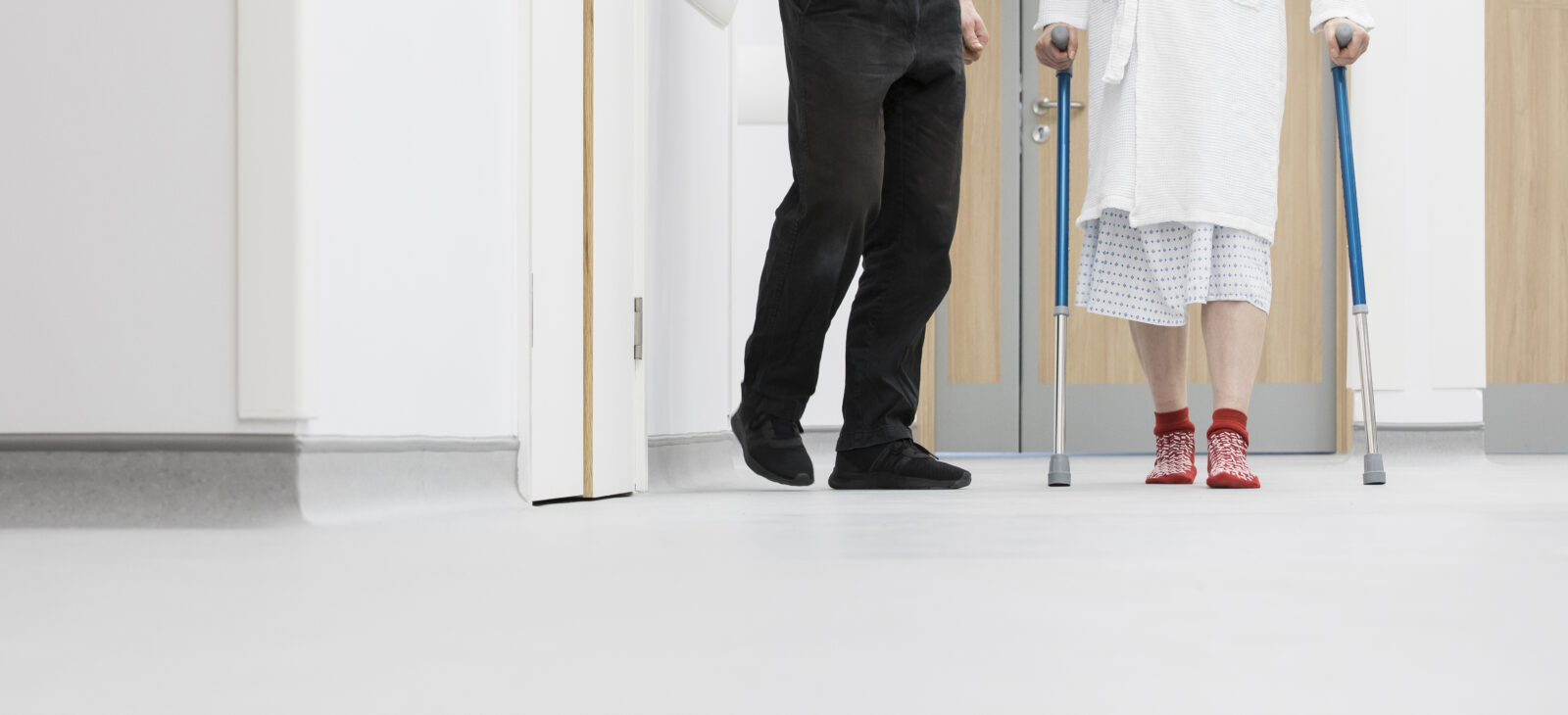Contact number: 020 7806 4060
What is Ankle Arthroscopy?
Ankle arthroscopy is a surgical procedure that uses a small camera (arthroscope) and specialised instruments inserted through tiny incisions to examine and treat problems inside the ankle joint. This minimally invasive approach allows for precise diagnosis and treatment with less disruption to the surrounding tissues.
Common conditions treated with ankle arthroscopy include:
- Ankle Impingement: Soft tissue or bone causing pain and restricted movement
- Cartilage Damage: Repairing or removing damaged cartilage caused by injury or arthritis
- Loose Bodies: Removal of bone or cartilage fragments within the joint
- Ankle Synovitis: Inflammation of the joint lining causing pain and swelling
- Ligament Injuries: Repairing torn ligaments for improved ankle stability
Ankle Arthroscopy at St John & St Elizabeth Hospital
At St John & St Elizabeth Hospital, we offer ankle arthroscopy with a focus on personalised care. Our consultants take the time to understand your condition and create a treatment plan that supports a smooth and safe recovery, helping you return to your daily activities.
Why choose us for ankle arthroscopy?
- Specialist Orthopaedic Surgeons: Our consultants have extensive experience in treating ankle conditions using arthroscopic techniques.
- Minimally Invasive Approach: Keyhole surgery reduces scarring, pain, and recovery time.
- Modern Facilities: Our hospital is equipped with the latest surgical and imaging technology, providing accurate assessments and supporting high-quality care.
- Accessible Location: Based in NW8, we serve patients from Hampstead (NW3), Kilburn (NW6), and across London.
We are committed to delivering expert, patient-focused care to help you regain comfort and mobility.
How to pay for your treatment
If you’re… paying for yourself
Did you know you don’t need private medical insurance to come to St John & St Elizabeth Hospital? As a self-pay patient, you can access safe, outstanding quality health care at times to suit you.
For scans and tests, as well as to see most consultants, you’ll still need to be referred by a medical professional like your GP, but as a self-pay patient, the process is more straightforward. You won’t need authorisation from an insurance provider, and you’ll have greater choice of consultant and appointment times.
If you’re… insured
St John & St Elizabeth Hospital is approved by all major medical insurance companies. If you have a personal private health insurance policy, or your company provide it for you, you can use it to pay for your care from your initial consultation through to treatment, surgery and aftercare such as physiotherapy. Not all private health insurance plans cover the same things. It’s very important to check exactly what you are covered for with your insurance provider.
Frequently Asked Questions About Ankle Arthroscopy
St John & St Elizabeth Hospital is located in St John’s Wood (NW8), a well-connected area of North West London. We are conveniently accessible for patients from Hampstead (NW3), Kilburn (NW6), and beyond.
By Tube:
- St John’s Wood station (Jubilee Line) is just a 5-minute walk from the hospital.
- Finchley Road (NW3) and Kilburn stations (NW6) on the Jubilee Line provide excellent connections.
By Bus:
- Wellington Road: Routes 13, 46, 82, and 113 stop near St John’s Wood Underground Station, just a short walk from the hospital.
- Circus Road: Routes 46 and 187 stop close to the hospital’s Circus Road entrance.
- Abbey Road: Routes 139 and 189 stop near the junction where Grove End Road becomes Abbey Road, providing easy access.
Major Roads:
If you’re travelling from NW3 or NW6, major routes such as Finchley Road or Kilburn High Road offer a direct approach to the hospital
Yes, you can usually walk after ankle arthroscopy, but it depends on the specific procedure performed. Most patients are advised to use crutches or wear a protective boot for the first few days to weeks to allow healing. Your consultant will provide guidance on when it’s safe to bear weight on the ankle and begin walking normally.
Ankle arthroscopy typically takes 30 to 90 minutes, depending on the complexity of the condition being treated.
The procedure is performed under anaesthesia, so you won’t feel pain during surgery. Some mild discomfort and swelling are common afterwards but can be managed with medication and rest.
Recovery is usually quicker than with open surgery. Most patients can resume light activities within two weeks, while full recovery, including sports or heavy exercise, may take 6 to 12 weeks with physiotherapy support.
After your surgery, your ankle will be bandaged for two weeks. It might be that you use crutches or wear a special boot at this time.
However, if you have someone to help you, you should be able to go home on the same day of your operation. You’ll need to keep your foot or ankle raised whenever possible.
After the first week post-surgery, your pain levels should decrease, and you’ll be able to walk short distances. For up to three months, you’ll likely have a physiotherapist to help you with the use of your ankle or foot.
This relationship will be important as it will help you understand where you are on your recovery journey. Depending on the type of arthroscopic procedure performed, at around six months, you should find yourself back to normal life.
Ankle arthroscopy is recommended for patients with persistent ankle pain, swelling, or stiffness that has not improved with non-surgical treatments, such as physiotherapy or injections.
Medically reviewed by Mr Aria Ghassemi - MBBS MRCS FRCS MSc Dip (Imperial College)

